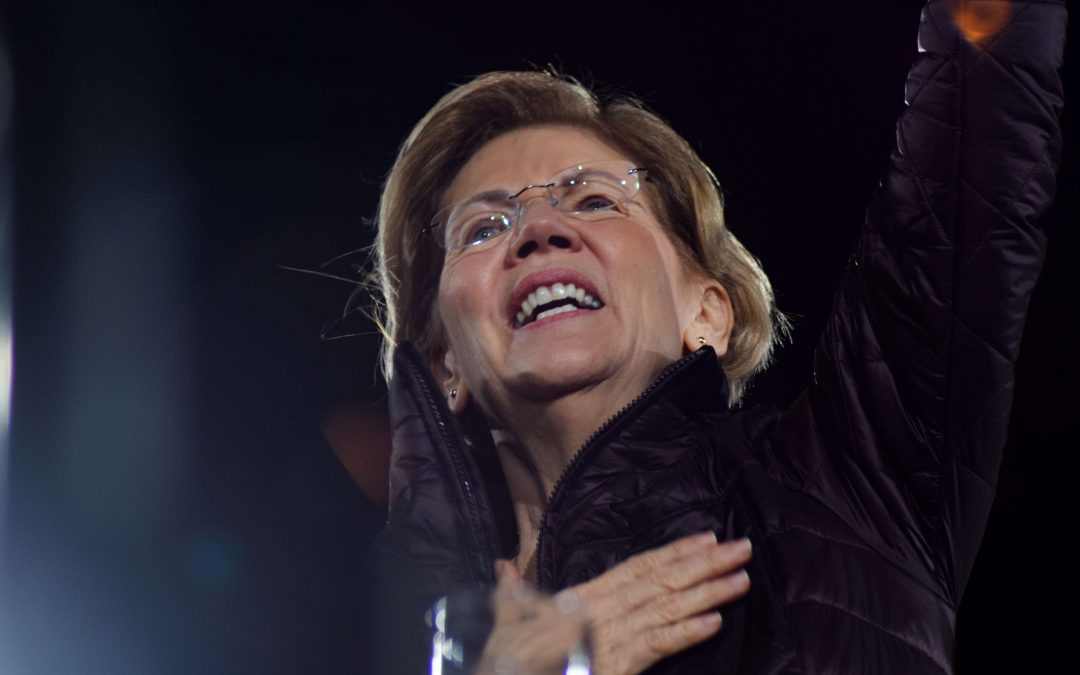LAS VEGAS – As Nevada caucuses end, Indigenous communities across the state say only three Democratic campaigns have made substantial efforts to address the concerns of Native Americans.
“I would like to see every candidate in 2020 put forward a comprehensive plan stating how they will address the needs of Native people and communities and partner with Indian Country,” said Rep. Sharice Davids, one of the two Native American representatives in Congress.
Native vote has had an important, but often overlooked role in the U.S. elections. In 2002, Sen. Tim Johnson won the Senate race in South Dakota by 0.07%, largely due to the Native vote across the state’s reservations, including Pine Ridge. The state Democratic Party launched a huge registration and turn-out drive which increased the turnout in Pine Ridge, from 30% the previous election cycle to 48%, securing Johnson a seat in the Senate.
About 9% of South Dakota’s population is Native, according to census data. In a state where Sec. Hillary Clinton won by 1 percentage point, Native vote could decide the Democratic nominee.
In Alaska, whose indigenous communities make up 15% of the population, Clinton was especially unpopular, winning about 20% of the voters in the Democratic caucuses, and 37% in the general elections. In comparison, both Obama and Bill Clinton won Alaska in their respective presidential cycles. These statistics imply that the Native vote might have ramifications which go beyond the primaries.
“The Native vote can swing key states like Arizona, Wisconsin and Michigan. So, it is an incredibly significant and powerful voting bloc in the places that matter not just for the primary, but for the general too,” said Davids.
Deb Haaland, the other Native American congresswoman, endorsed Sen. Elizabeth Warren and campaigned for her in Reno, visiting indigenous communities.
“It was an honor to have Congresswoman Deb Haaland come into our communities and speak directly to our issues,“ said Bethany Sam, a member of the Standing Rock Sioux Tribe living as an Urban Indian in Reno. Urban Indians, indigenous people living in urban areas, represent a growing proportion of the Native population in the U.S.
Sam caucused for Warren. She said that the senator addressed key concerns of her community, such as the lack of the federal healthcare funding and the misrepresentation of indigenous history in the U.S. educational institutions. The only other campaigns that actively rallied across the Indian Country in Nevada, apart from Warren’s, are Sen. Bernie Sanders’s and billionaire Tom Steyer’s campaigns.
By analyzing votes in the Nevada precincts where Native American reservations sit, Sanders won the Native vote in Nevada. Another candidate which performed disproportionately well with the Native voters is billionaire Tom Steyer. According to Elveda Martinez, a Paiute member living in Schurz, Mineral County, and Nathan Whistler of Walker River Paiute tribe, Steyer threw a dinner for their respective communities and held mock caucuses. Martinez added that talking about his agenda with the tribal leaders, Steyer sounded more authentic and won 12, out of 15 voters in her community. The rest of the votes went to Sanders.
Healthcare has been an ongoing discussion within the indigenous communities. Many feel that Medicare for all would address the underfunded Indian Health Service, while others argue that getting rid of Obamacare is detrimental for Native Americans.
“We do get some service under Indian Health Service, but it’s not what people think,” said Martinez
“The Obamacare has really helped and benefited our community. You can’t just get rid of it. It’ll kill our people.”
Indian Health Service doesn’t cover numerous medical expenses, such as certain prescription drugs. For Nevada’s indigenous communities, getting proper healthcare often means driving for miles to the closest IHS clinic. In June 2019, Indian Health Service’s information system ended up on the Government Accountability Office’s list of “10 Most Critical Legacy Systems in Need of Modernization.” While efforts to modernize it are under way, the process might take years to finish.
Last year, a Nevada state legislation guaranteed all tribes the right to have precinct on their reservation, as long as they requested it in a timely fashion. This made it easier for a number of indigenous communities to vote in the in-person caucuses. This year, the Democratic Party made it possible to vote early in Nevada. Voters were able to cast their votes starting Feb. 15. Despite the efforts, early voting ballot boxes were available only in cities, making it harder for Native Americans living in reservations to cast an early vote.
According to Martinez, only four people from her community were able to go to Reno to vote early and in order to do so, they had to drive 75 miles round trip. Whistler echoed the same concern, saying that Hawthorne, 39 miles south of the reservation, was the closest early polling site.
“We still have a lot of work to do locally to help our citizens understand how important it is to cast their vote,” said Whistler, who tried to up the turnout in his community this election cycle.
According to Whistler, voter turnout in his community didn’t increase since 2016, despite easier access to a caucus location. He added that addressing accessibility is, however, a step in the right direction.
The U.S. Census report from 2010 counted more than 5 million indigenous or part-indigenous individuals living in the States today. Out of those, approximately 74% are over 18 and eligible to vote. Davids says that it’s critical for the Democratic party to engage Native voters and remove barriers to the ballot box so that they can exercise their right to vote.
“We’re banding together to make sure to rock the Native vote,” said Amber Torres, the leader of River Walker Paiute tribe.
“I don’t think people understand how powerful and how impactful we could be if we band together and get our voices heard.”

